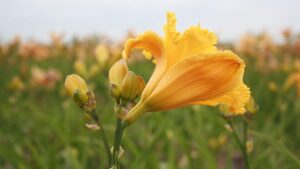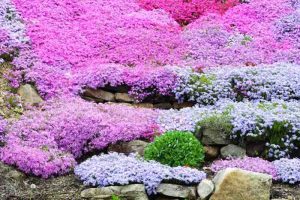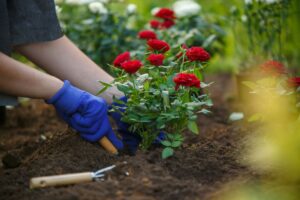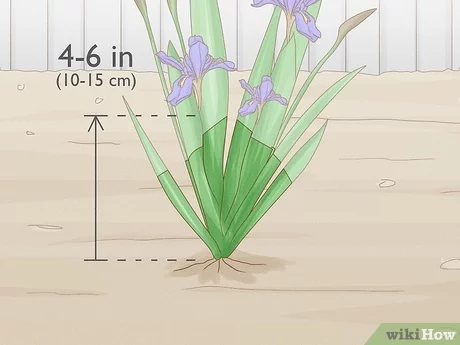Training a Monstera Deliciosa: Tips for Success
The Monstera deliciosa is a popular houseplant known for its large, heart-shaped leaves and its ability to climb.
In this article, we’ll discuss the best methods for training a Monstera, as well as some tips for success.If you’re looking to train your Monstera to climb a trellis or pole, there are a few things you need to know..
We’ll also cover:

- The best time to train your Monstera
- The different methods of training
- How to care for a trained Monstera
So if you’re ready to learn how to train your Monstera deliciosa, read on!
Training a Monstera Deliciosa: Tips for Success
Monstera deliciosas are beautiful, easy-to-care-for plants that can add a tropical touch to any home. However, if you want your Monstera to reach its full potential, you’ll need to train it.
Training a Monstera deliciosa is not difficult, but it does require some patience and attention to detail. Here are a few tips to help you get started:
- Choose the right pot. Monsteras deliciosas grow quickly, so it’s important to choose a pot that is large enough to accommodate their growth. A good rule of thumb is to choose a pot that is at least 2 inches wider than the diameter of the plant’s root ball.
- Use the right soil. Monsteras deliciosas prefer well-draining soil that is rich in organic matter. A good soil mix for Monsteras deliciosas would be equal parts potting soil, perlite, and compost.
- Water regularly. Monsteras deliciosas need to be watered regularly, but it’s important not to overwater them. Allow the top inch of soil to dry out before watering again.
- Fertilize regularly. Monsteras deliciosas benefit from regular fertilization. A good fertilizer for Monsteras deliciosas would be a balanced fertilizer that is applied once a month.
- Provide bright indirect light. Monsteras deliciosas need bright indirect light to thrive. A good spot for a Monstera deliciosa would be near a window that receives filtered sunlight.
- Prune regularly. Monsteras deliciosas can get quite large, so it’s important to prune them regularly to keep them in shape. Pruning also encourages new growth.
- Train your Monstera deliciosa. Training your Monstera deliciosa will help it to reach its full potential. You can train your Monstera deliciosa by using a moss pole or a trellis.
Here are a few additional tips for training your Monstera deliciosa:
- Start training your Monstera deliciosa when it is young. This will make it easier to train the plant and help it to develop good habits.
- Use a soft, flexible material to train your Monstera deliciosa. This will help to avoid damaging the plant’s stems.
- Be patient. Training a Monstera deliciosa takes time and patience. Don’t get discouraged if your plant doesn’t seem to be responding right away.
With a little patience and care, you can train your Monstera deliciosa to be a beautiful and healthy plant.
Choosing the Right Monstera
Choosing the Right Monstera
When choosing a Monstera deliciosa, there are a few things to keep in mind.
- Size: Monsteras can grow quite large, so it’s important to choose a plant that will fit in your space.
- Light: Monsteras need bright, indirect light to thrive.
- Water: Monsteras need regular watering, but they should not be allowed to sit in waterlogged soil.
- Temperature: Monsteras prefer warm temperatures, between 65°F and 85°F.
- Humidity: Monsteras thrive in humid environments. If you live in a dry climate, you may need to mist your plant regularly or place it on a pebble tray.
Once you’ve considered these factors, you can start choosing the right Monstera for your home. Here are a few popular varieties to consider:
- Monstera deliciosa ‘Adansonii’: This variety has smaller leaves than the standard Monstera deliciosa, and it’s a good choice for smaller spaces.
- Monstera deliciosa ‘Borsigiana’: This variety has larger leaves than the standard Monstera deliciosa, and it’s a good choice for people who want a more dramatic plant.
- Monstera deliciosa ‘Variegata’: This variety has leaves with white or yellow variegation, and it’s a beautiful addition to any home.
No matter which variety you choose, a Monstera deliciosa is a great way to add a touch of tropical flair to your home.
Preparing Your Monstera for Training
Preparing Your Monstera for Training
Before you can start training your Monstera, you need to make sure that it is healthy and strong. Here are a few things you can do to prepare your plant for training:
- Water your Monstera regularly. Monsteras are tropical plants and need to be watered regularly to stay healthy. Make sure to water your plant deeply, so that the water reaches the roots.
- Fertilize your Monstera monthly. Fertilizing your Monstera will help it to grow strong and healthy. Use a balanced fertilizer that is specifically formulated for houseplants.
- Give your Monstera plenty of light. Monsteras need bright, indirect light to thrive. If your plant is not getting enough light, it will not grow as quickly or as vigorously.
- Repot your Monstera as needed. Monsteras can grow quickly, so it is important to repot them as needed to give them room to grow. Repot your plant into a pot that is about 2 inches larger than the current pot.
Once your Monstera is healthy and strong, you can start training it. There are many different ways to train a Monstera, but some of the most popular methods include:
- Moss pole training: This is a popular method for training Monsteras to climb. To do this, you will need to attach a moss pole to the side of your pot and then gently guide the stems of your plant up the pole.
- Tie-down training: This method is similar to moss pole training, but instead of using a moss pole, you will use string or twine to tie the stems of your plant to a support.
- Scrambling training: This method involves allowing your Monstera to climb up a trellis or other structure. This is a more natural way to train your plant, but it does require more space.
Training Your Monstera
Training Your Monstera
Monsteras are vining plants that can grow quite large if left to their own devices. However, by training your Monstera, you can control its growth and shape it into a beautiful specimen that will add a touch of tropical flair to your home.
There are a few different ways to train your Monstera. One popular method is to use a moss pole. A moss pole is a long, sturdy pole that you can insert into the soil next to your Monstera. As the plant grows, its aerial roots will attach to the moss pole and help to support the plant’s weight. You can also use a trellis or other type of support to train your Monstera.
When training your Monstera, it is important to be patient. It may take some time for the plant to start growing in the desired direction. However, with a little patience and care, you can train your Monstera to become a beautiful and unique addition to your home.
Here are a few tips for training your Monstera:
- Start training your Monstera when it is young. This will make it easier to shape the plant and encourage it to grow in the desired direction.
- Use a soft, flexible material to tie the plant to the support. This will prevent damaging the plant’s stems.
- Tie the plant loosely. You don’t want to restrict the plant’s growth.
- Check the plant regularly and adjust the ties as needed. The plant will grow and change over time, so you will need to adjust the ties to keep the plant in shape.
With a little care and attention, you can train your Monstera to become a beautiful and unique addition to your home.
Maintaining Your Trained Monstera
# Maintaining Your Trained Monstera
Once you’ve trained your Monstera deliciosa, it’s important to maintain it properly in order to keep it looking its best. Here are a few tips:
- Water regularly. Monsteras are tropical plants and need to be watered regularly, especially during the growing season. Allow the top inch of soil to dry out between waterings, but don’t let the plant dry out completely.
- Provide bright, indirect light. Monsteras need bright, indirect light to thrive. A south-facing window is ideal, but they can also do well in an east- or west-facing window. Avoid direct sunlight, which can scorch the leaves.
- Fertilize monthly. Monsteras benefit from monthly fertilization during the growing season. Use a balanced fertilizer, such as a 10-10-10 fertilizer, diluted to half strength.
- Prune as needed. Monsteras can get quite large, so it’s important to prune them as needed to keep them in shape. Prune away any dead or damaged leaves, and you can also prune back the vines to control their growth.
- Repot as needed. Monsteras will eventually outgrow their pots, so it’s important to repot them as needed. Repotting should be done in the spring, when the plant is actively growing. Use a pot that is one size larger than the current pot, and make sure the pot has drainage holes.
By following these tips, you can help your trained Monstera deliciosa thrive for years to come.
Table of Contents
- Watering
- Light
- Fertilization
- Pruning
- Repot
Troubleshooting Common Problems
Troubleshooting Common Problems
Monstera deliciosas are relatively easy to care for, but there are a few common problems that you may encounter. Here are some tips for troubleshooting these problems:
- Yellow leaves: If your Monstera deliciosa’s leaves are turning yellow, it could be due to a number of reasons. Overwatering is the most common cause, so make sure to check the soil moisture before watering. Underwatering can also cause yellow leaves, so water your plant more frequently if the soil is dry. Nutrient deficiency can also cause yellow leaves, so make sure to fertilize your plant regularly.
- Brown tips: Brown tips on Monstera deliciosa leaves can be caused by a number of factors. Dry air is a common cause, so make sure to mist your plant regularly or place it in a humid environment. Too much sun can also cause brown tips, so move your plant to a spot with more shade. Fertilizer burn can also cause brown tips, so be sure to follow the directions on the fertilizer label.
If you’re having trouble troubleshooting a problem with your Monstera deliciosa, it’s always a good idea to consult with a qualified horticulturist.
Resources
1. Monstera Deliciosa Care Guide
This article from The Spruce provides comprehensive information on how to care for a Monstera Deliciosa, including tips on training it to climb.
2. Monstera Deliciosa Training
This article from Gardening Know How provides step-by-step instructions on how to train a Monstera Deliciosa to climb.
Final Thoughts
Outro
Training a Monstera Deliciosa can be a fun and rewarding experience. By following these tips, you can help your plant grow into a beautiful and healthy specimen. So what are you waiting for? Get started today!
Bonus tip: If you’re looking for a more hands-off approach, you can also train your Monstera Deliciosa using a moss pole. Simply attach the moss pole to the pot using a few pieces of wire, and then gently guide the plant’s aerial roots around the pole. As the plant grows, it will naturally wrap itself around the moss pole, creating a beautiful and supported structure.
- Cat Palm vs Majesty Palm: Which Should You Choose? - June 30, 2024
- Flowers That Survive Winter: Discover the Exceptional No. 5 - June 30, 2024
- The Ultimate Guide to the Growth and Care of the Black Pagoda Lipstick Plant - June 29, 2024





